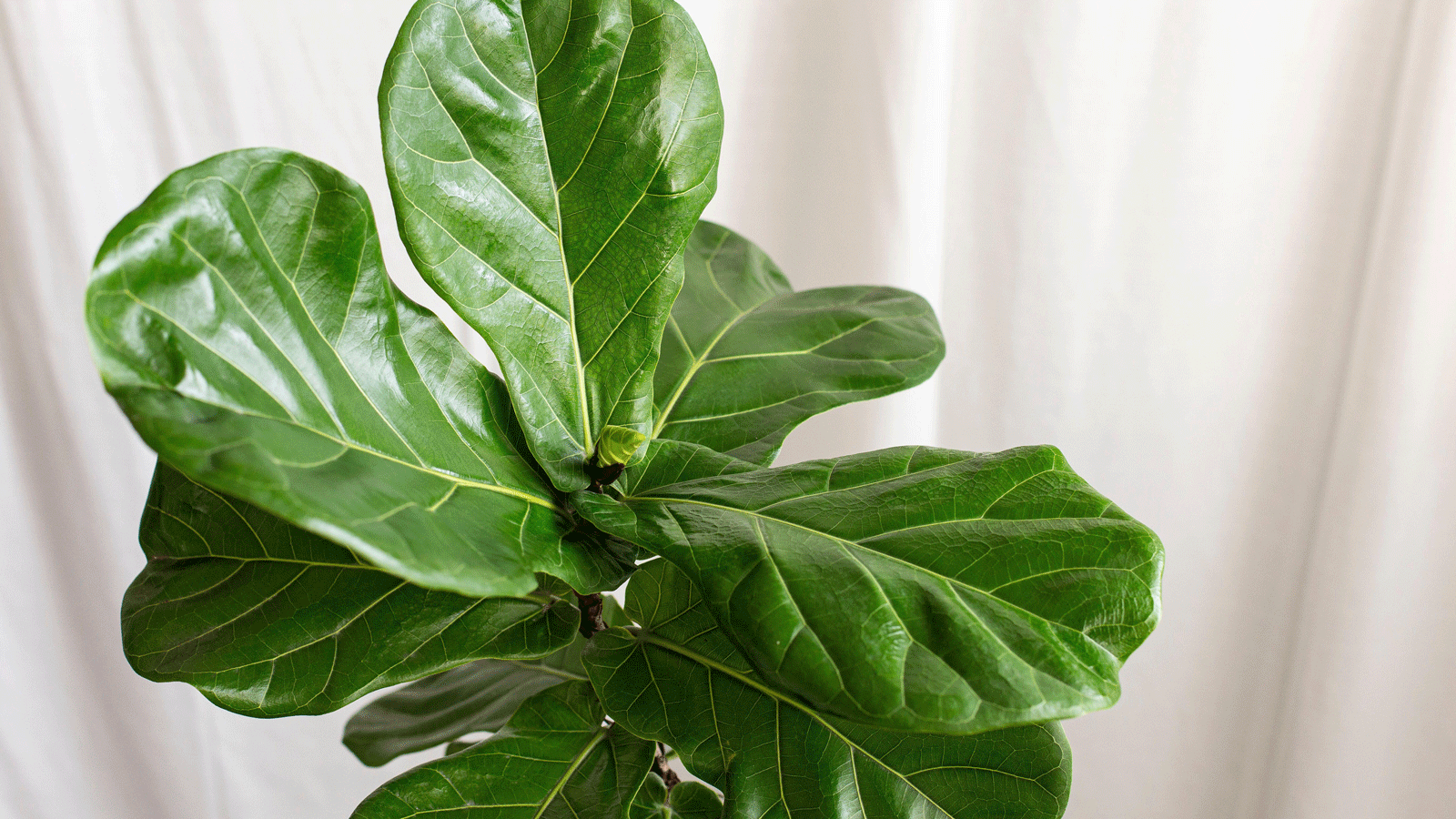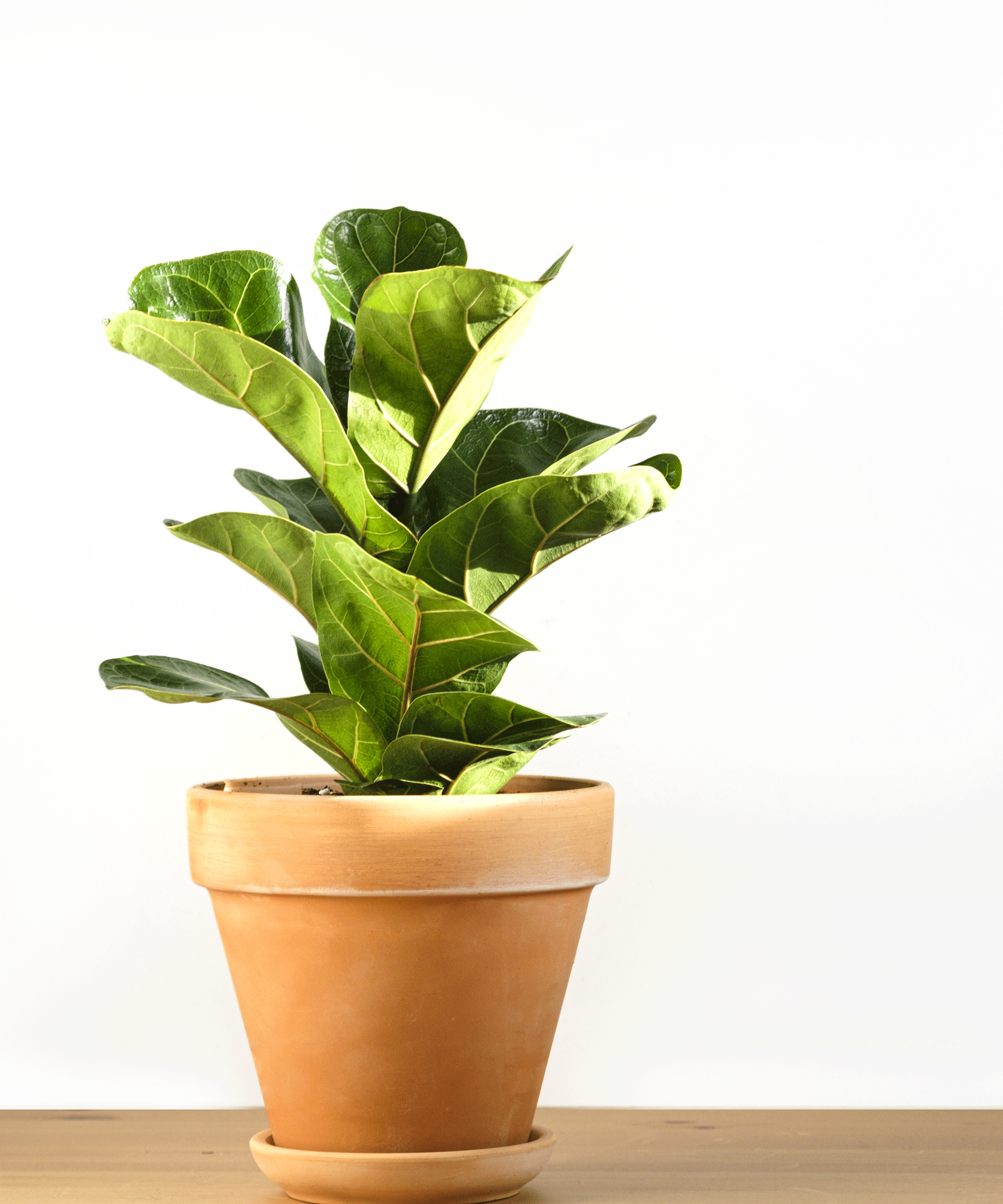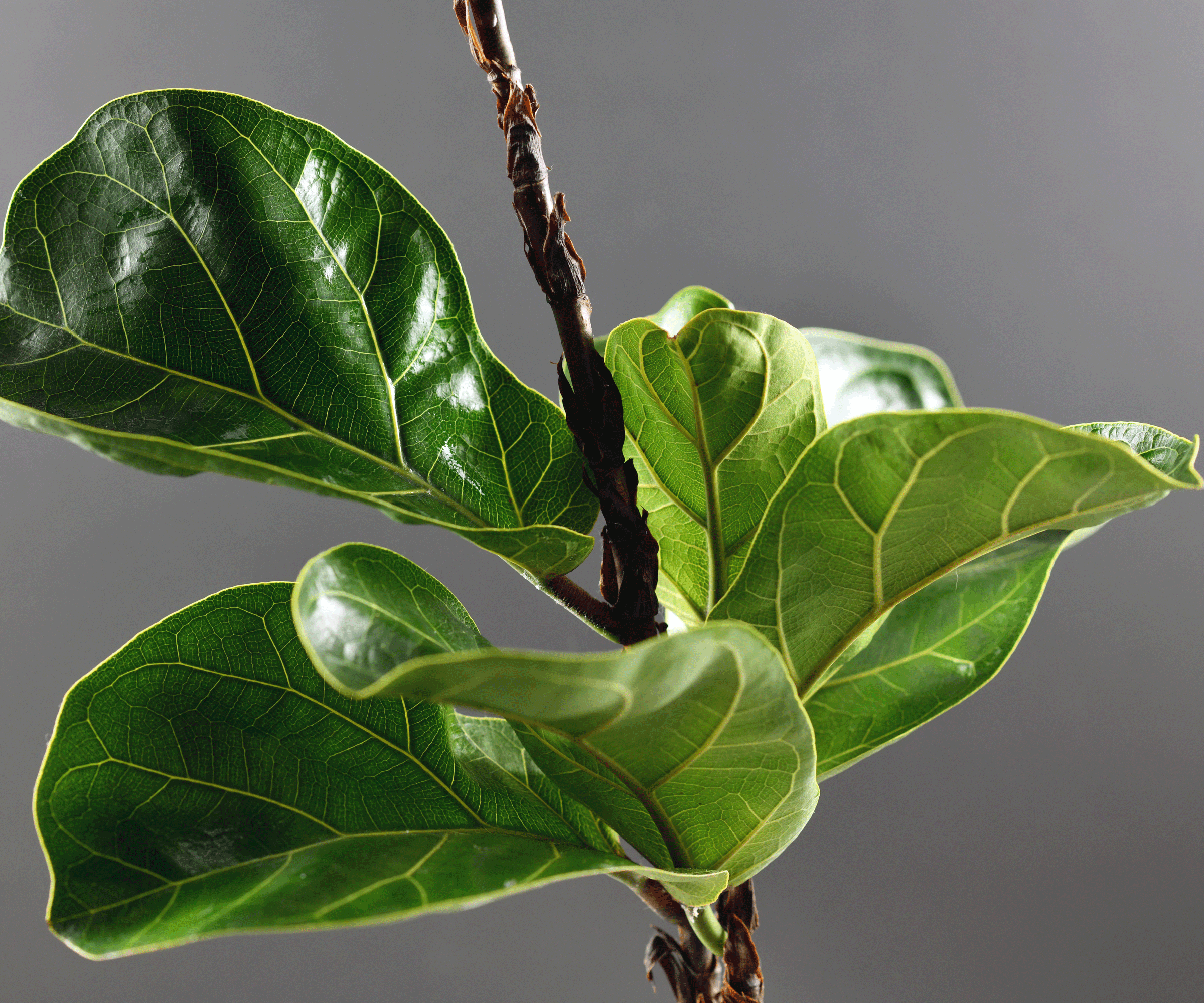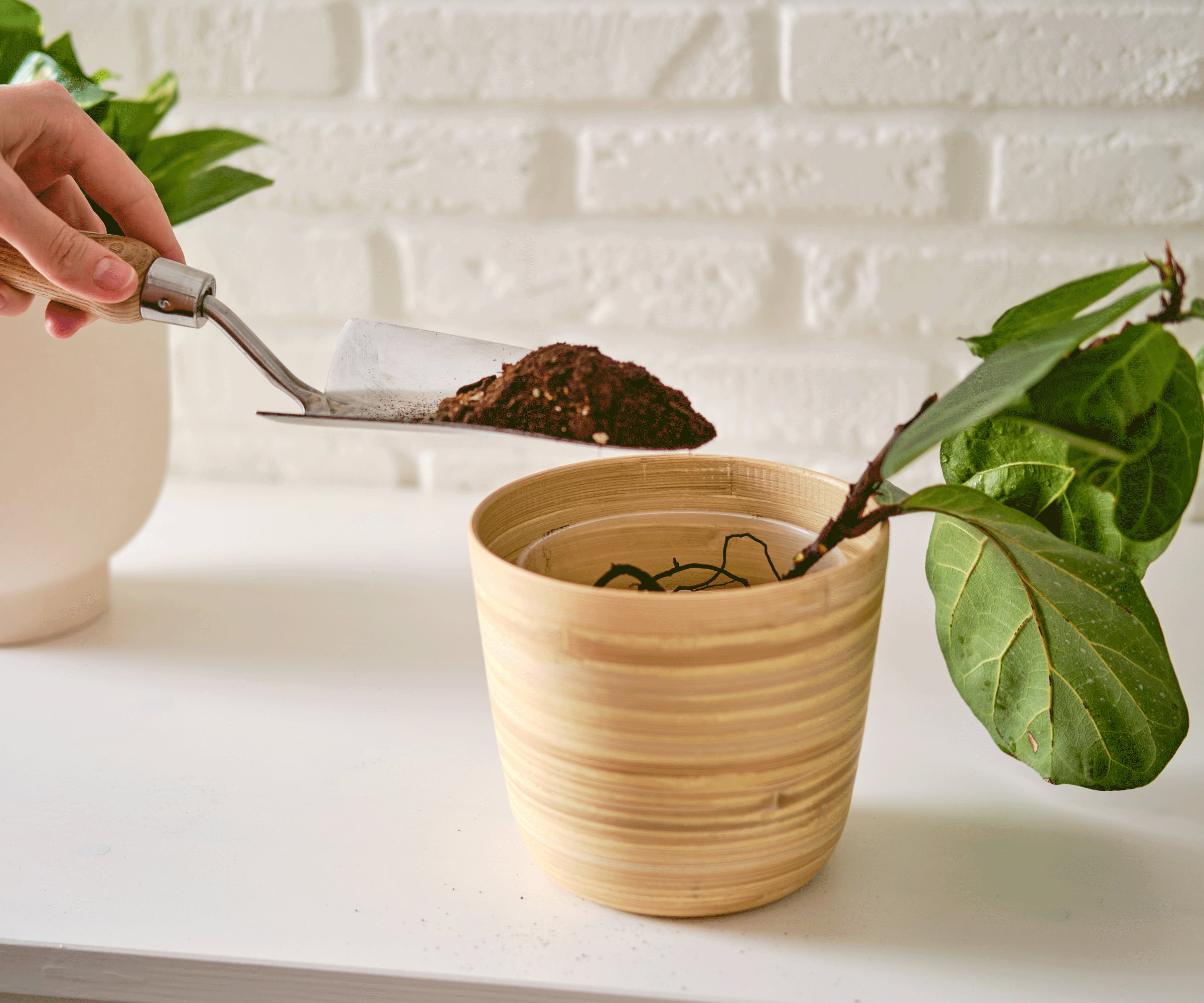How to propagate a fiddle leaf fig and get more plants for free
Why have one of these statement plants when you can have several? Here's an easy way to grow your fiddle leaf fig family
- (opens in new tab)
- (opens in new tab)
- (opens in new tab)
- Sign up to our newsletter Newsletter


If you’d love to add to your fiddle leaf fig collection, finding out how to propagate one of your existing plants should be top of your to-do list. As well as the satisfaction of nurturing your own cutting, cloning your original plant saves money too.
Propagation means taking a piece of an existing plant and turning it into a rooted cutting that will grow into a new plant. The good news is that it's easy to do. The most popular way to propagate a fiddle leaf fig plant is by taking a cutting from the stem and growing it in water.
In addition to gaining some free plants there are other benefits to propagation too, especially when it comes to caring for your original fiddle leaf fig. It encourages the parent plant to grow more branches and develop an attractive full and bushy habit, as well as keeping bigger fiddle leaf fig plants from getting too tall for the room.

After about a year your new plant should look like this

Sarah Wilson has been writing about gardens since 2015, covering everything from garden design to houseplant care. She has studied introductory garden and landscape design as well as floristry. A proud houseplant parent, she enjoys tending to her collection of more than 50 indoor plants. Fiddle leaf figs are one of her favorite types and now she's getting into propagating them in a big way.
Propagating a fiddle leaf fig in 5 simple steps
If you're keen on increasing your collection of indoor plants, our easy step-by-step guide explains how to propagate a fiddle leaf fig correctly so you can grow new plants.
'Fiddle leaf figs tend to grow well from cuttings, preferably from a branch or center stem,' says Greg Thomas from Austin, Texas-based garden center Barton Springs Nursery (opens in new tab).
If you also need to repot your fiddle leaf fig, it can be worth taking cuttings from the plant at the same time.
1. Take a stem cutting from your fiddle leaf fig

Take your cutting from a stem with healthy leaves
'The first step is to sterilize a sharp knife, scissors, or pair of bypass pruners,' says Greg Thomas. 'Next, look to the stem of the plant for nodes to identify where to cut. Any place a leaf has grown from is called a node. These nodes are the points where new growth will appear. Cut between two nodes, not on a node.'
Make sure you take a cutting from a healthy looking stem, cutting it back to the main stem. Ideally the stem should be pliable, and slightly thicker than a pencil.
If your fiddle has plenty of leafy stems it's worth taking several cuttings to propagate at the same time. Your plant will soon replace them. If your fiddle is small you can take an individual leaf to propagate instead.
2. Prepare the cutting
The stem length of each cutting should be 3-5 inches below the first leaf. Your cutting should have two or three leaves attached but no more than this. Any more and the plant will use too much energy to keep them alive rather than focusing on developing a healthy root system.
Remove any leaves that are lower down the stem as they will be submerged in the water and will rot and decay. Clean up the stems, removing any loose bark or other debris that will be below the water level as this will also likely fall off and cloud the water. Wipe away any white sap too that may appear where you made the cut.
3. Put the cutting in water

As well as taking a cutting from a stem you can propagate fiddles from a single leaf
Fiddle leaf fig cuttings can easily be rooted in water. Mason jars, available from Amazon (opens in new tab), are best for this. Use either distilled water or tap water that has been left for a day or two to allow the chlorine to evaporate. The water should be at room temperature.
Water propagation is a great way to monitor the plant’s progress and observe the stages of new life. 'Propagation containers or vessels need to be thoroughly cleaned before use,' says Greg Thomas. 'Clear or transparent containers are best as they allow you to monitor water conditions.'
You can also grow cuttings in pots of moist soil. If you choose this option you can dip the tip of the stem in water, then into rooting hormone, available from Amazon (opens in new tab), to speed up the growing process. But you won't be able to monitor root development as easily.
4. Care for your cutting

Look out for healthy root development
Transfer the cutting to a sunny windowsill for best results. Replace the water every few days to keep it fresh. You will soon notice small white bumps beginning to develop at the base of each leaf or stem, and these will eventually grow into new roots after a month.
When the roots are about 3-4 inches long it's time to plant up the cutting in a pot of compost. One of the benefits of growing cuttings in water is that you can monitor root development and see exactly when they're ready to be potted on.
5. Pot up your fiddle leaf fig cutting

The next step is potting up your fiddle leaf fig cutting
Transfer the cutting to a pot of soil as soon as you see a healthy network of roots that look strong enough to support the cutting. You will need a pot that has plenty of space for your new plant to grow, and choose one with drainage holes. The best soil for a fiddle leaf fig is a free draining growing medium such as a 3:1 mix of compost and perlite.
Keep your eye on the cutting in terms of watering and feeding, and you’ll soon have a brand-new fiddle leaf fig plant to add to your collection.
How do you air layer to propagate fiddle leaf figs?
Air layering is a method of propagation which allows a cutting to grow its own root system while still attached to the mother plant.
'Choose a stem that is at least 1/2 inch in diameter and has at least one leaf node,' says Breanna Sherlock, one of the in-house experts at Planta (opens in new tab). 'Make a shallow cut in the stem, about 1 inch long and 1/4 inch deep, at the chosen leaf node.'
Wrap the cut area with a ball of moist sphagnum moss, making sure to completely cover the cut and the leaf node. Secure the moss in place with plastic wrap or aluminum foil, ensuring a tight seal to create a humid environment.
'Check the moss regularly to ensure that it stays moist,' recommends Breanna. 'Roots should begin to form in 4-6 weeks.'
Once roots have formed, carefully cut the stem below the roots and pot the new plant in a container filled with potting mix.
How long does it take to propagate a fiddle leaf fig?
How long it takes to propagate a fiddle leaf fig depends whether you grow the cutting in water or soil, as well as the conditions the cutting is grown in.
'Propagation times can vary due to light conditions and the age of the plant,' says Greg Thomas. 'Fiddle leaf fig cuttings prefer the same light conditions as the mother plant, plenty of indirect sunlight in a bright area and limited direct light.'
The fiddle leaf fig cutting is ready to pot when the roots are 3-4 inches. It may take a year or so for your new plant to really get established but when it does you'll have a strong and healthy new fiddle fig. Remember to clean your fiddle leaf fig leaves to keep it growing well too.

Lifestyle journalist Sarah Wilson has been writing about gardens since 2015. As well as homesandgardens.com she's written for Gardeningetc.com, Livingetc.com, Easy Gardens and Modern Gardens magazines. Her first job on glossy magazines was at Elle, during which time a visit to the legendary La Colombe d'Or in St-Paul-de-Vence led to an interest in all things gardening. Later as lifestyle editor at Country Homes & Interiors magazine the real pull was the run of captivating country gardens that were featured.
-
-
 Robert Pattinson just bought a Spanish Colonial-style home – with an interior designer past
Robert Pattinson just bought a Spanish Colonial-style home – with an interior designer past'The Batman's' Robert Pattinson and Suki Waterhouse purchased the Jeff Lewis-designed Hollywood Hills estate for $5.3 million
By Megan Slack • Published
-
 7 expert-approved methods to remove candle wax from carpet
7 expert-approved methods to remove candle wax from carpetCleaning professionals share their tips on how to remove candle wax from carpet
By Millie Hurst • Published

